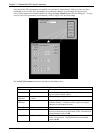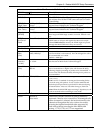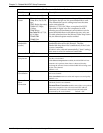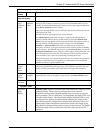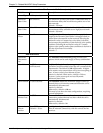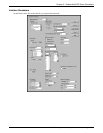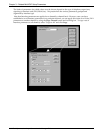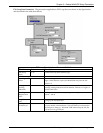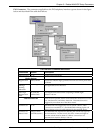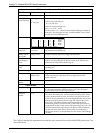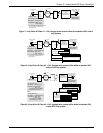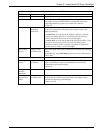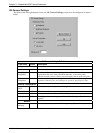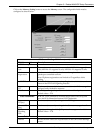
Chapter 3 – Related MultiVOIP Setup Parameters
Multi-Tech Systems, Inc. Avaya Communication Manager Guide 45
FXS Loop Start Interface: Parameter Definitions (cont’d)
Field Name Values Description
Flash Hook Options fields
Generation --
not applicable to FXS interface
Detection
Range
for Min. and Max.,
50 - 1500
milliseconds
For a received flash hook to be regarded as such by the MultiVOIP,
its duration must fall between the minimum and maximum values
given here.
Pass Through
Enable
Y/N
Not used if “Register with Communication Manager” is enabled
Caller ID fields
Caller ID Type Bellcore
The MultiVOIP currently supports only one implementation of Caller
ID. That implementation is Bellcore type 1 with Caller ID placed
between the first and second rings of the call.
Caller ID
enable
Y/N
Caller ID information is a description of the remote calling party
received by the called party. The description has three parts: name
of caller, phone number of caller, and time of call. The ‘time-of-call’
portion is always generated by the receiving MultiVOIP unit (on FXS
channel) based on its date and time setup.
Caller ID
enable (cont’d)
Y/N
The forms of the ‘Caller Name’ and ‘Caller Phone Number’ differ
depending on the IP transmission protocol used (H.323, SIP, or SPP)
and upon entries in the phonebook screens of the remote (CID
generating) voip unit. The CID Name and Number appearing on the
phone at the terminating FXS end will come either from a central
office switch (showing a PSTN phone number), or the phonebook of
the remote (CID sending) voip unit.
The Caller ID feature has dependencies on both the telco central office and the MultiVOIP phone book. See
discussion after the FXO Parameters section below.



